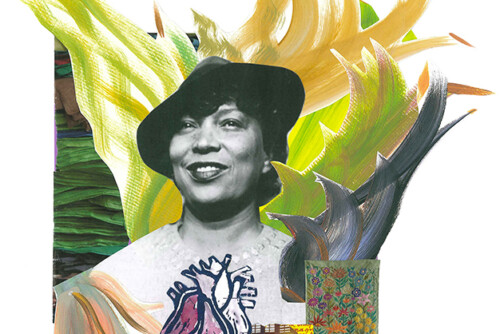Introduction
For my response to Dr. Stimpson’s lecture, I propose to examine a part of the Atalanta myth that is unelaborated, yet resonates with what I know about girls’ and women’s involvement in sport and physical activity. This is the role that Artemis, the virgin goddess of the hunt, assumes when Atalanta’s father tries to rid himself of his infant daughter. In the guise of a bear, Artemis rescues and nurtures the infant, who has callously been abandoned to die. Under the care of Artemis, Atalanta lives to become a young woman and a celebrated athlete, not only a runner and a wrestler but an archer as well. One might even think of her as a martial artist, for she acquires the skills to protect herself and, as Dr Stimpson argues, to “resist devaluation.” Here I take Dr. Stimpson to mean that Atalanta learns to challenge anyone or anything that would undermine her sense of self-worth solely because she is female.
The role of Artemis
At this point readers must allow me to freeze the frame, to fill in the myth’s gaps using my own imagination. I focus on Atalanta’s girlhood, during which she becomes strong, self-sufficient, and independent. How does this happen? I suggest that it occurs in the usual way, and here I refer back to the non-mythical world. Girls develop into resourceful, self-reliant women by being supported and encouraged in their endeavors. They develop with the help of mentors and role models. And they develop by virtue of social structures that are built to enable rather than disable the growth of female self-worth. Perhaps we can think of Artemis as symbolically fulfilling these conditions. In this way, the nurturing figure of Artemis is crucial to the vision that I have of Atalanta.
Who or what acts as Artemis for girls who are not goddesses, but mortals fashioned of muscles, bones, and blood? How do girls become physically capable, able to hold their own in sports and games, confident in the ways that they move their bodies? These are the questions I would like to address in this response. I argue that there are people and experiences in a girl’s life that, at crucial junctures in her development, can help her become physically strong and autonomous. This strength may also enable other types of female power and autonomy. Conversely, the presence of naysayers at critical moments of a girl’s development can diminish that potential.
The social construction of femininity
Let me begin by briefly reviewing what we know about the social construction of femininity. In our society, the most salient fact about the birth of an infant, apart from whether it’s healthy, is its gender. 1 The first question posed to the new parents often is, Is it a girl or a boy? Once the gender of the child is established, friends and family members know whether to buy a dainty pink layette or a sturdy toy dump truck. 2 Parents impute different traits to their infants long before any real physiological differences assert themselves. 3 A girl may be described as quiet and delicate-featured; a boy may be deemed noisy and robust. These stereotypes often mean that children are treated differently by their parents. Caregivers may play with girls gently, while they engage in rough and tumble play with boys. 4
In a similar fashion, family members, teachers, peers, and other significant figures in a child’s life communicate different expectations for girls and boys, even if they genuinely wish to rear a child in a gender-neutral way. 5 Since a key part of children’s self-worth depends on their feeling that they are competent actors in the world, they quickly learn their gendered roles and to behave in ways that are thought to be “sex-appropriate.” In turn, when children “perform” gender, their behaviors influence the ways adults treat them. Socialization is a two-way street! 6 Adults and peers usually reward girls for being demure, ladylike, and polite, while the same behavior in boys will elicit teasing, ridicule, or punishment. 7 In our culture, gender is constructed as oppositional so that femininity and masculinity are not only different, but are actually opposed to one another. 8
- J. Lorber, Paradoxes of Gender (New Haven, CT: Yale University Press, 1995).[↑]
- C. A. Hasbrook, “Young Children’s Social Constructions of Physicality and Gender,” in Inside Sports, ed. J. Coakley and P. Donnelly (London: Routledge, 1999), 7-16; M. A. Messner, Taking the Field: Women, Men, and Sports (Minneapolis: University of Minnesota Press, 2002); B. Thorne, Gender Play: Girls and Boys in School (New Brunswick, NJ: Rutgers University Press, 1995).[↑]
- Lorber, Paradoxes of Gender; Messner, Taking the Field.[↑]
- Hasbrook, “Young Children’s Social Constructions”; Thorne, Gender Play.[↑]
- Messner, Taking the Field.[↑]
- J. Coakley, Sports in Society: Issues and Controversies, 8th ed. (New York: McGraw-Hill, 2004); Messner, Taking the Field; Thorne, Gender Play.[↑]
- D. S. Eitzen and G. H. Sage, Sociology of North American Sport, 7th ed. (New York: McGraw-Hill, 2003).[↑]
- M. J. Kane, “Resistance/Transformation of the Oppositional Binary: Exposing Sport as a Continuum,” Journal of Sport and Social Issues 19 (1995): 191-218; Lorber, Paradoxes of Gender.[↑]



